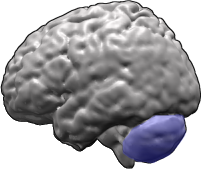| Name | OMIM | RareDiseases | Other |
|---|
| Anemia, sideroblastic spinocerebellar ataxia; Pagon Bird Detter syndrome | 301310 | Disease ID 668 at NIH 's Office of Rare Diseases | |
| Friedreich's ataxia; Spinocerebellar ataxia, Friedreich | 229300 | Disease ID 6468 at NIH 's Office of Rare Diseases | |
| Infantile onset Spinocerebellar ataxia | 605361 | Disease ID 4062 at NIH 's Office of Rare Diseases | |
| Spinocerebellar ataxia 1 | 164400 | Disease ID 4071 at NIH 's Office of Rare Diseases | |
| Spinocerebellar ataxia 2 | 183090 | Disease ID 4072 at NIH 's Office of Rare Diseases | |
| Spinocerebellar ataxia 3; Machado Joseph disease | 109150 | Disease ID 6801 at NIH 's Office of Rare Diseases | |
| Spinocerebellar ataxia 4 | 600223 | Disease ID 9970 at NIH 's Office of Rare Diseases | |
| Spinocerebellar ataxia 5 | 600224 | Disease ID 4953 at NIH 's Office of Rare Diseases | |
| Spinocerebellar ataxia 7 | 164500 | Disease ID 4955 at NIH 's Office of Rare Diseases | |
| Spinocerebellar ataxia 8 | 603680 | Disease ID 4956 at NIH 's Office of Rare Diseases | |
| Spinocerebellar ataxia 13 | 605259 | Disease ID 9611 at NIH 's Office of Rare Diseases | |
| Spinocerebellar ataxia 18 | 607458 | Disease ID 9976 at NIH 's Office of Rare Diseases | |
| Spinocerebellar ataxia 19 | 607346 | Disease ID 9969 at NIH 's Office of Rare Diseases | |
| Spinocerebellar ataxia 20 | 608687 | Disease ID 9997 at NIH 's Office of Rare Diseases | |
| Spinocerebellar ataxia 21 | 607454 | Disease ID 9999 at NIH 's Office of Rare Diseases | |
| Spinocerebellar ataxia 23 | 610245 | Disease ID 9950 at NIH 's Office of Rare Diseases | |
| Spinocerebellar ataxia 25 | 608703 | Disease ID 9996 at NIH 's Office of Rare Diseases | |
| Spinocerebellar ataxia 26 | 609306 | Disease ID 9995 at NIH 's Office of Rare Diseases | |
| Spinocerebellar ataxia 28 | 610246 | Disease ID 9951 at NIH 's Office of Rare Diseases | |
| Spinocerebellar ataxia 30 | 117360 | Disease ID 9975 at NIH 's Office of Rare Diseases | |
| Spinocerebellar ataxia 35 | 613908 | Disease ID at NIH 's Office of Rare Diseases | |
| Spinocerebellar ataxia amyotrophy deafness syndrome | | Disease ID 2451 at NIH 's Office of Rare Diseases | ORPHA:2074 at Orphanet |
| Spinocerebellar ataxia, autosomal recessive 1 | 606002 | Disease ID 4949 at NIH 's Office of Rare Diseases | |
| Spinocerebellar ataxia, autosomal recessive 3 | 271250 | Disease ID 9971 at NIH 's Office of Rare Diseases | |
| Spinocerebellar ataxia, autosomal recessive 4 | 607317 | Disease ID 4952 at NIH 's Office of Rare Diseases | |
| Spinocerebellar ataxia, autosomal recessive 5 | 606937 | Disease ID 9977 at NIH 's Office of Rare Diseases | |
| Spinocerebellar ataxia, autosomal recessive 6 | 608029 | Disease ID 4954 at NIH 's Office of Rare Diseases | |
| Spinocerebellar ataxia, autosomal recessive 21 - mutation in SCYL1 | Online Mendelian Inheritance in Man (OMIM): 616719 | | ORPHA:466794 |
| Spinocerebellar ataxia, autosomal recessive, with axonal neuropathy | 607250 | Disease ID 10000 at NIH 's Office of Rare Diseases | |
| Spinocerebellar ataxia, X-linked, 2 | 302600 | Disease ID 9978 at NIH 's Office of Rare Diseases | |
| Spinocerebellar ataxia, X-linked, 3 | 301790 | Disease ID 9981 at NIH 's Office of Rare Diseases | |
| Spinocerebellar ataxia, X-linked, 4 | 301840 | Disease ID 9980 at NIH 's Office of Rare Diseases | |


